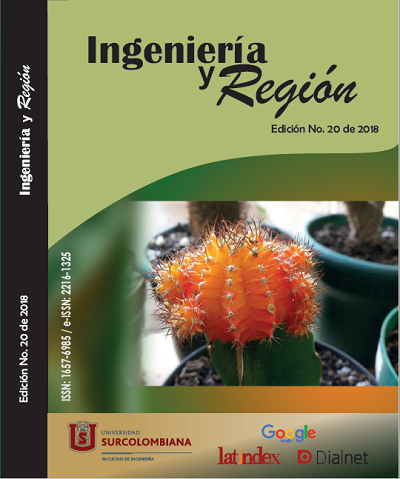Effect of garlic extract as a cold compensator in the spread of the apple red delicious in t nuevo ideal durango, region
##plugins.themes.bootstrap3.article.main##
The research evaluated the effects of organic and chemical cold compensators on flowering, fruit quality and productivity. The experimental design was random blocks with 4 treatments and 5 repetitions. T0 = control; T1 = garlic (5 kg / 1000 l + glycerin 2 l / 1000 l); T2 = Erger ® (Organic nitrogen (1%), inorganic nitrogen (5% nitric and 5% ammoniacal) and 50% organic carbon + calcium nitrate 5 kg / 1000 L; T3 = Revent ® (Thidiazuron 200 ml / 1000l + winter mineral oil 10 l / 100) Five similar branches were identified and marked, 4 according to the cardinal points and one central.The number of flowers was evaluated, in fruits the equatorial and polar diameter with a vernier, the weight was determined with precision balance and percentage of coloration, to measure the hardness of a penetrometer, the soluble solids with a refractometer The analysis of variance and the comparison test of means (Tukey; α = 0.05) between the response variables, was performed with the statistical package of Dr. Olivares of FAUANL There were significant differences in the flowering of the treatments T1 = 178, T2 = 171, T3 = 208 with respect to the control T0 = 91. The polar and equatorial diameter of the fruit T2 was different from the rest (19.7%). The concentration of soluble solids and the hardness of the pulp did not present differences, contrary to the coloration the T1 was different to the other treatments (74.78%). In conclusion, garlic can function as a cold compensator in the Red deliciuos apple tree, however, it is less productive compared to the chemical treatments used.
Downloads
##plugins.themes.bootstrap3.article.details##
El-Hage, N., Hattam, C., 2003. Agricultura orgánica, ambiente y seguridad alimentaria. Roma: Organización de las Naciones Unidas para la Agricultura y la Alimentación, p.3. ISBN 92-5-304819-0
Feicán Mejía, C., Encalada A., C., Larriva C., W., y Calle Pérez, G. (1998). El cultivo del manzano para las zonas altas del Austro ecuatoriano. Cuenca, Ecuador: INIAP, Estación Experimental Chuquipta, Programa de Fruticultura. P. 13.
García, L., Martínez, R., Ortega, S., Castro B., 2010. Componentes químicos y su relación con las actividades biológicas de algunos extractos vegetales. Facultad de ciencias biológicas, UJED, Unidad Regional Universitaria de Zonas Áridas-UACh. 12 pag.
Infoagro., 2007. Comsultado 06 de agosto de 2018. http://www.infoagro.com/frutas/frutas_tradicionales/manzana.htm
Instituto Nacional de Estadística, Geografia e Informática, 1998. Nuevo Ideal. Estado de Durango. Cuaderno Estadístico Municipal. ISBN 970-13-2008-5.
Martínez-Valenzuela, C., Gómez-Arroyo, S., 2007. Riesgo gonotoxico por exposición a plaguicidas a trabajadores agrícolas. Revista Internacional de Contaminación Ambiental, vol. 23, núm. 4. Universidad Nacional Autónoma de México. Distrito Federal, México. P. 17.
Nava-Pérez, E., García-Gutiérrez, C., Camacho-Báez, J. & Vázquez-Montoya, E. (2012). Bioplaguicidas: Una opción para el control biológico de plagas. Ra Ximhail, vol. 8, núm. 3. Sonora, México. 17-29 pp.
Olivares, S. E., 1995. Paquete Estadístico de Diseños Experimentales. Facultad de Agronomía, UANL. Marín, N. L. México.
Steel G. R., Torrie H. J., 1986. Bioestadística: Principios y Procedimientos. Editorial McGRAW-HILL. ISBN 968-451-495-6.


















